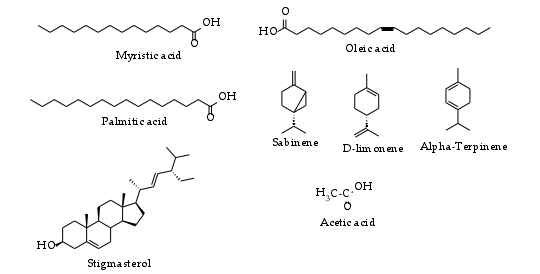Name:Guang-Wan Hu
Tell:
Email:guangwanhu@wbgcas.cn
Organization:Wuhan Botanical Garden
Research Summarizes the Up-to-date Ethnobotanical Uses, Chemistry, Pharmacology, and Distribution of the Hydnora Species
2021-06-01
The genus Hydnora, one of the basal angiosperms, is indigenous to Africa, Madagascar and the Arabian Peninsula. It consists of eight species: seven in Africa and one in the Arabian Peninsula. Notably, Hydnora abyssinica A.Br. (Figure 1) and Hydnora africana Thunb. are widely distributed compared to other species. Despite the Hydnora species being practiced in ancient folkloric medicine, their traditional uses and pharmacological value are poorly documented.
The Eastern African Plant Flora and Taxonomy Research Group from Wuhan Botanical Garden summarized the up-to-date ethnobotanical uses, chemistry, pharmacology, and distribution of the Hydnora species, and point out possible research gaps.
Hydnora species have been reported in South Africa, Madagascar, Uganda, Mozambique, Swaziland, Botswana, Kenya, Sudan, Ethiopia, Tanzania, Angola, Somalia, Namibia, and the Arabian Peninsula (Figure 2). Its distribution is closely related to the host plant, the distribution range of this genus is increasing due to their apparent host. However, the variation of host dependency of these species to their host plants has not been revealed, whether they exchange genes that help them to perform other metabolic activities, or they entirely depend on their hosts for nutrients. This needs a further study.
Hydnora species were found to have ethnobotanical and other usages. Hydnora plants are a source of food for wild animals, particularly fruits. Dried roots are used for charcoal preparation and tanning leather in Sudan. Moreover, it is used to treat various diseases when combined with other medicinal plants such as paralysis, diabetes, fever, insomnia, hypertension and so on. Furthermore, since it is rich in tannins, it has also been used as an astringent traditional medicine to treat diarrhea.
Understanding the phytochemical composition and content of Hydnora species is necessary to substantiate their ethnopharmacological uses. Currently, only a few studies are available on the pharmacological significance of the Hydnora species and their phytochemical composition. H. abyssinica is the only species that has been widely explored in this genus. Only a few compounds of pharmacological importance have been characterized in H. abyssinica using gas chromatography-mass spectrometry (GC-MS). They include myristic acid, oleic acid, palmitic acid, terpene (Figure 3). Furthermore, the compounds have been characterized and their structures elucidated using nuclear magnetic resonance (NMR) (Figure 4). They include catechin,vanillin and protocatechuic acid. Similarly, no phytochemical studies have been conducted on the other Hydnora species, which is an opportunity for further exploration.
Hydnora species are ascribed with good antibacterial and antioxidant activities as shown by various experiments. The antioxidant reducing potential depicted by this species can be wholly or partially linked with the high content of phenols, flavonoids, and tannins that were earlier reported in these species.
In addition, the genus has antiproliferative activity and has potential in the treatment of cancer. A previous study indicated that H. abyssinica was used together with other medicinal plants to increase its efficacy in curing several ailments. For example, when mixed with Justicia exigua S. Moore leaves, it is used to cure paralysis. When combined with Passiflora edulis Sims leaves, it is used to treat hemorrhoids. However, the clinical application of these combinations has not been confirmed.
Additionally, the pharmacological action mechanisms underlying the synergistic effects of these species and their medicinal material applications are yet to be explored. There is still a lot of research space in this field.
The results of the study, entitled “Understanding the Ethnobotany, Chemistry, Pharmacology, and Distribution of GenusHydnora (Aristolochiaceae)”, were recently published in Plants.
This work was supported by grants from the National Natural science foundation of China and Sino-Africa Joint Research Center, CAS. Kenyan students Elijah Mbandi Mkala as the first author of the paper, HU Guangwan as the correspondence author. A number of students in the subject group participated in the study.

Figure 1. Hydnora abyssinica A.Br. (Image by WBG)

Figure 2. Distribution of Hydnora species in Africa and Arabian Peninsula (Image by WBG)

Figure 3. Chemical structures of H. abyssinica characterized using gas chromatography coupled with mass spectrometry (GC-MS) analysis (Image by WBG)

Figure 4. Chemical structures of isolated compounds from H. abyssinica (Image by WBG)